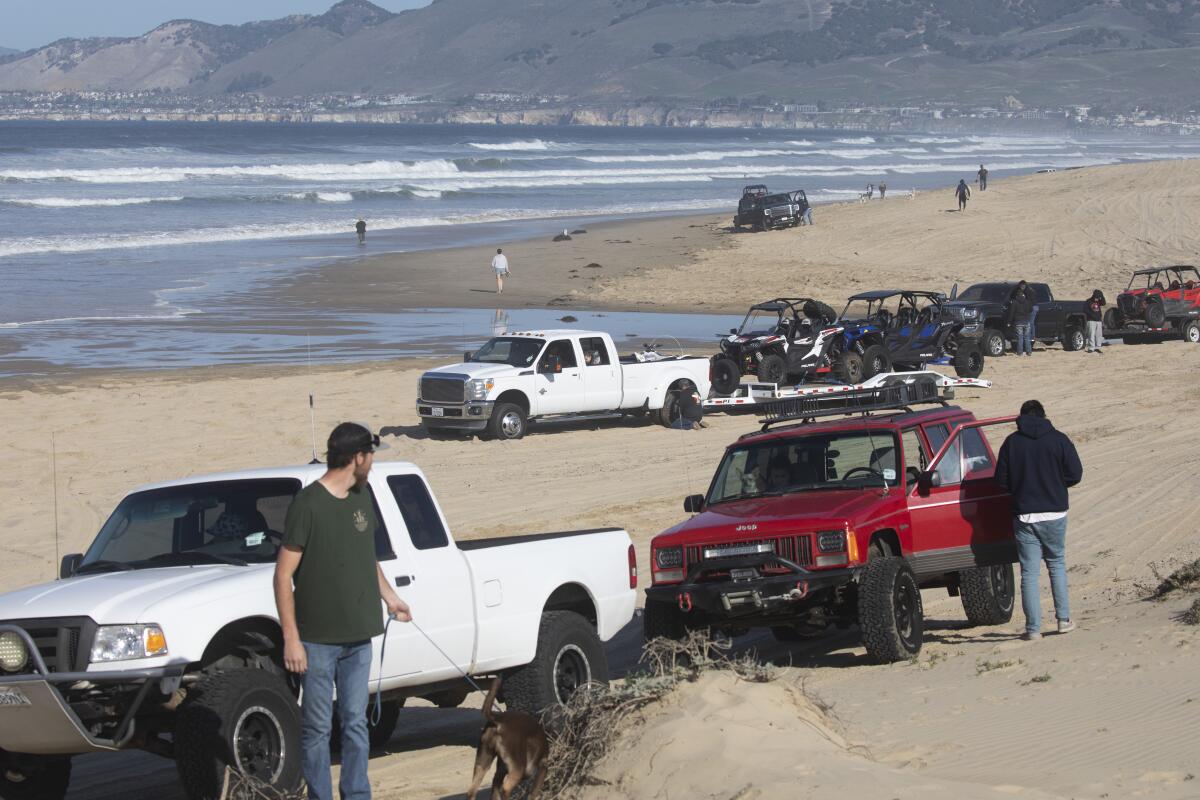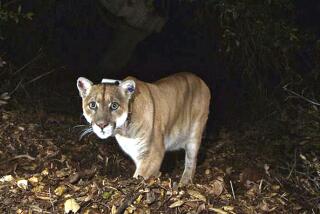Off-roaders and snowy plovers face off at the Coastal Commission

- Share via
Remember when the return of nature was one of the few things that could uplift us during the early days of the pandemic? OK, dolphins didn’t actually return to the canals of Venice, but mountain lions ventured onto the streets of Santiago, Chile, while an endangered river otter showed up in urban waterways there. A cougar prowled San Francisco. Mountain goats visited a Welsh village and bobcats made occasional forays into the backyards Los Angeles-area homes.
We don’t know yet to what extent fish populations might have recovered while fishing operations were drastically reduced. But we do know that some birds had a wonderful time of it. A study found that birds of the Bay Area produced higher-quality song once human noise had abated. And as people stayed away from many beaches, shorebirds expanded their nesting. That includes the Pacific Coast population of western snowy plover, a threatened species that nests along the shore. The plover did especially well at Oceano Dunes, just south of Pismo Beach, where off-roaders were kept from whizzing over the sand for months.
Now that disease can no longer keep the off-roaders away, the question is: Should they be excluded because of the environmental damage they cause? In the past, not only have plovers been run over by vehicles, but park rangers have actually swept away their nests and erected deterrents to keep them from the area. That’s not how to bring back a species. The California least tern is affected as well, and getting to the off-roading area involves driving through the mouth of a creek used by endangered steelhead trout.
A conflict between environment and recreation has been brewing for decades at Oceano Dunes State Vehicular Recreation Area, the only place in the state parks system where people can still drive on the beach. Off-roading already has been restricted to a tenth of the space it used to have. On Thursday, as my newsroom colleague Louis Sahagun reports, the California Coastal Commission is set to decide whether to phase out that last tenth. There are issues about dust kicked up that affects residents downwind. State parks people would like to expand the operation and add camping and, of all things, a shooting range. Why we need a shooting range along the ocean is anyone’s guess. My hunch is that there are many less-special places the state could place such a range.
But that’s not the bigger issue. The editorial board discussed the possible phase-out of off-roading in that location and though the decision was close — occasionally, we are split enough to have to vote — I’ll be honest enough to say my side lost. I see both sides but for me it comes down to this: If there had been no off-roading at Oceano, there’s no way it would be allowed to start today. We know a lot more now about — and have more respect for — wildlife and our effect on it. That should include the effects of driving gasoline-powered vehicles in sensitive areas, especially across coastal waterways.
It’s also true that this state gets more crowded all the time, and people need space for their recreational pleasure. Hiking is more my thing than off-roading, but when trails are closed to protect special areas or species, I go find a trail elsewhere. There are more than 100,000 acres of off-roading land in the Southern California desert alone. It might not have the same feel as beach sand, but it also doesn’t have trout trying to make a comeback or birds that are trying to expand their nest-hold on the sand.
Some of my colleagues reasonably pointed out that this is a small section of the coast and that off-roaders already have seen their access reduced there. They worried that if environmentalists curtail ways of life, such actions will cause a backlash that ultimately will be bad for other efforts to preserve the environment. That’s true. It’s also hard to take something away that people have enjoyed for a long time, harder than prohibiting it in the first place. But we can’t let that interfere with what we know: It’s necessary to reduce our heavy tire-print on the state.
Is there a more remote area with stretches of sand for off-roaders? One where noise, dust and wildlife impacts would be greatly reduced? If so, the state should look at opening a recreation spot there (though it should require electric vehicles).
Meanwhile, the state should provide more recreation opportunities at Oceano, with tent and RV camping that will continue to draw tourists and boost the local economy without messing with trout and plovers. The state has too few of those facilities, which fill up so fast that it’s hard to nab a spot. That’s in keeping with the state’s mission of coastal access — and also coastal protection. The pandemic showed us how well nature could do when we quit stomping (and wheeling) around. Let’s keep that hopeful lesson in mind.
More to Read
A cure for the common opinion
Get thought-provoking perspectives with our weekly newsletter.
You may occasionally receive promotional content from the Los Angeles Times.







